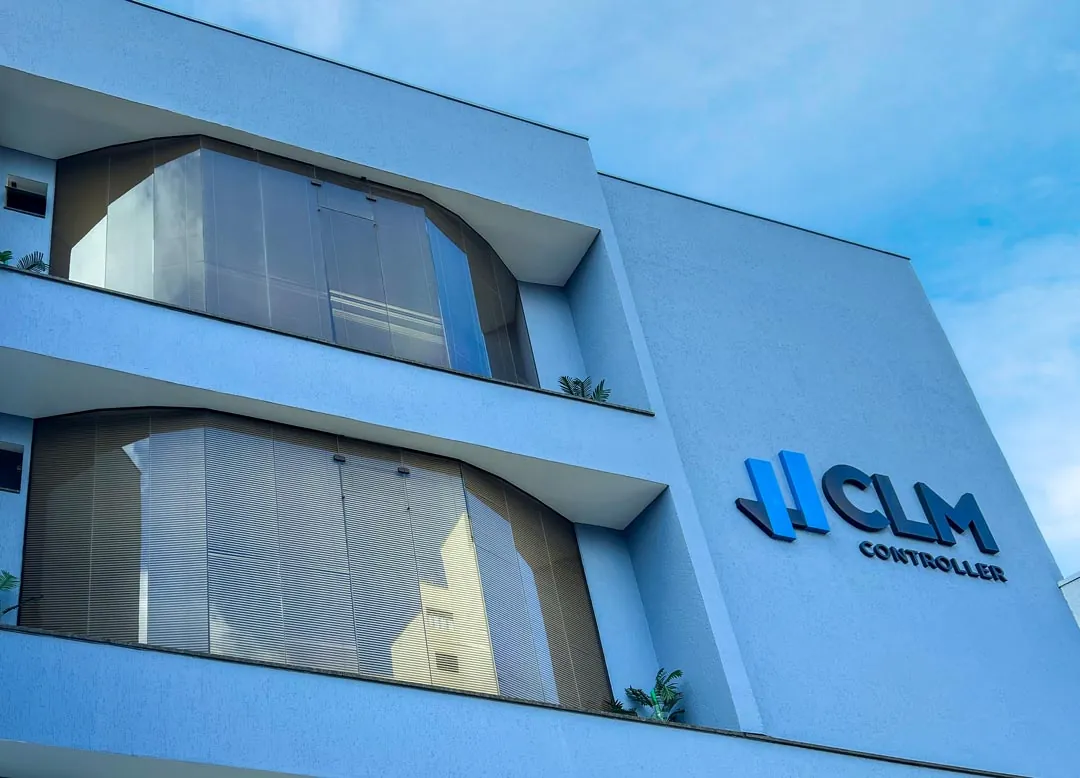Family Holding: the essential strategy for asset management and protection in 2024
In the dynamic business scenario of 2024, families and entrepreneurs are increasingly paying attention to strategies that provide security and efficiency in wealth management. The Family Holding Company has emerged as a crucial tool in this context, offering significant benefits to those seeking to preserve and expand their assets.
What is Family Holding?
A family holding company is a corporate structure that aims to centralize and manage a family's assets, bringing together assets such as companies, investments, real estate and shareholdings. This configuration offers advantages both in terms of management and asset protection.
[Article]: Do I need a partner to start a company?
See the benefits of creating a family holding company
Centralization of control
Entrepreneurs can consolidate decision-making control, simplifying processes and ensuring more agile decision-making in line with strategic objectives.
Facilitating business succession
Family Holding facilitates the creation of business succession plans, allowing the company's legacy to be passed on smoothly and efficiently.
Professionalized management
By hiring specialized managers, entrepreneurs can optimize asset management, introducing expertise and focus on business expansion.
Asset protection and tax efficiency
Segregation of assets
Entrepreneurs can protect their wealth by segmenting assets, reducing risks and ensuring a strategic approach for each business sector.
Efficient tax planning
Family holding companies provide an easy way to implement efficient tax strategies, optimizing tax burdens and maximizing investment resources.
Protection against creditors
In the event of eventualities, the family holding company can act as a protective barrier, safeguarding family assets against possible creditors.
Who can set up a family holding company?
All families have the possibility of establishing a family holding company. This strategy is particularly useful in succession planning, and is especially beneficial for families who have accumulated a significant amount of assets over the years.
With the formation of a family holding company, the family's assets are brought together under a single corporate entity. This ensures the protection of these assets and guarantees that they are readily accessible to family members in the corporate context, whenever the need arises.
Who is responsible for managing a family holding company?
Generally, the head of the family, be it the patriarch or matriarch, assumes the position of company manager, with full control over the family's assets. The other family members, as shareholders, only own shares in the company and have the option of occupying positions within the family organization.
Learn how to open a family holding company
To set up a family holding company, you need to follow a few essential steps. First, the assets must be surveyed, analyzing the assets of the family members involved to assess feasibility and define the most appropriate corporate model. Next, choose the partners, meeting with them to clarify any doubts and understand their expectations regarding the succession of assets. This information is crucial for drawing up the holding company's documents and ensuring that the transfer of assets takes place according to the wishes of each partner. In addition, it is important to define the type of company, which can be a Limited Company, which offers greater freedom in drawing up the articles of association and simplicity in incorporation, or a Public Limited Company (S/A), which is more costly and allows the sale of shares to third parties.
The next steps include tax planning, which is crucial for minimizing tax impacts on the new company, and drawing up the documentation, especially the articles of association, which establish the rules of succession between the partners. All documents must be registered with the relevant authorities, including the transfer of personal assets to the company. Finally, it is essential to hire qualified professionals, such as accountants and specialized lawyers, to offer technical support during the process of opening the holding company, ensuring that everything goes according to plan and that the partners' expectations are met.
How much does it cost to set up a family holding company?
The cost of creating and maintaining a Family Holding Company can vary significantly depending on several factors, including the complexity of the assets involved, the jurisdiction chosen for the constitution, the fees of the professionals involved, and the annual administrative costs. Here is a general breakdown of the costs:
Planning and Structuring
Expenses for drawing up legal documents, such as contracts, articles of association and registrations with notaries or competent bodies.
Registration and incorporation fees
Government fees for registering the holding company and any other fees associated with setting up the legal entity.
Asset Valuation
If the holding involves the transfer of significant assets, it may be necessary to evaluate them for documentation and tax planning purposes.
An estimate of the value for 2024
On average, the minimum cost of setting up a family holding company is R$ 3,800.00, which is estimated based on the main costs of setting up a holding company.
Is there a monthly cost to maintaining a family holding company?
The monthly cost of maintaining a family holding company varies greatly, for reference it is around R$ 500.00 to R$ 1,000.00, but this amount can vary according to the specific purposes of the holding company, the costs of professional services and other accounting-related expenses.
Even if a Family Holding does not carry out economic activities, it must keep regular accounts that are submitted monthly.
In addition, it is necessary to submit accessory declarations every year, which must be prepared by a specialized accountant.
[Article]: What is asset shielding?
How can family holding companies help with succession planning?
A Family Holding Company can be a crucial strategic tool in succession planning, offering a number of benefits to facilitate the transition of assets and the continuity of family businesses. Here are the main ways in which it helps:
Centralization of assets: A family holding company centralizes the ownership of assets in a single legal entity. This simplifies asset management and the future transfer of assets to subsequent generations.
Structuring and controlling succession: Clear definition of heirs and shareholdings that allows the organized distribution of quotas or shares in the holding company among family members, defining each one's share in the total assets.
Governance regulations: Which establishes clear rules for governance, decision-making and dispute resolution, helping to maintain family harmony.
Tax efficiency: Strategies such as the gradual distribution of quotas/shares can reduce the tax impact on the transfer of large assets, making better use of exemptions and reducing charges such as gift and inheritance tax.
Adapting to change: The structure of the holding company can be adapted as family dynamics and objectives evolve, allowing for the inclusion of new members, the restructuring of shareholdings and the reallocation of assets.
Discretion in the transfer of assets: The transfer of shares in the holding company can take place in a more discreet and private manner, without the need for public and bureaucratic inventory processes.
Planned business succession: In holding companies involving family businesses, it facilitates the transition of leadership and operations to the next generations, maintaining business continuity and the family legacy.
Preparing future generations: By involving family members in the management of the holding company, it contributes to their financial education and preparation to manage the assets in the future.
By using a family holding company for succession planning, families can ensure a more efficient, secure and harmonious transfer of assets, preserving the legacy and family values for future generations.
Learn how to manage a family holding company
Managing and controlling a family holding company requires a solid governance structure and clear processes to ensure the efficient administration of assets and alignment with family objectives. This involves defining directors, boards or managers, who can be family members or external professionals, to make important decisions and manage day-to-day operations. Governance is reinforced by well-defined constitutive documents, such as articles of association and shareholders' agreements, which set out the rules and responsibilities. In addition, regular meetings and clear investment and asset management policies are key to keeping everyone involved informed and aligned with the holding company's vision.
In day-to-day management, it is crucial to keep strict accounts and produce regular financial reports to ensure transparency and enable effective monitoring of assets. Clear communication between management and family members is essential to maintain harmony and engagement. Mechanisms for resolving conflicts must be in place, as well as strategies for educating and involving future generations in the management of the holding company. In addition, collaboration with specialized professionals, such as lawyers, accountants and financial advisors, can provide the necessary support for making informed decisions and complying with legal and tax requirements, ensuring effective management that is adaptable to the family's needs.
What are the risks associated with a family holding company?
The risks associated with a family holding company can vary depending on the specific structure, the assets involved and the family dynamics. One of the main risks is managerial, involving the possibility of internal conflicts between family members over management decisions, profit distribution or investment strategies. Such conflicts can lead to legal disputes, jeopardize asset management and even affect family harmony. In addition, governance risks arise when there is a lack of clarity in responsibilities or leadership succession, which can result in inappropriate decisions or operational inefficiency. Legal and tax issues are also significant risks, as changes in legislation or in the interpretation of existing laws can affect the tax structure, asset protection and the effectiveness of succession planning.
Another set of risks is related to the very nature of the concentration of assets. The Family Holding Company may be subject to market and investment risks, especially if there is insufficient diversification or inadequate asset management. Changes in the market, the economy or specific sectors can negatively impact the value and profitability of assets. In addition, liquidity issues can arise, limiting the family's ability to access resources in times of need. It is essential that families are aware of these risks and employ mitigation strategies, such as investment diversification, clear succession planning, effective governance and regular consultation with professionals for legal, tax and financial advice. Recognizing and preparing for these risks can help maintain the integrity and prosperity of the family holding company over the generations.
[Article]: What is the role of accountants for holding companies?
Conclusion
In 2024, the Family Holding Company stands out as an essential tool for managing and protecting assets. By providing efficiency in administration and security in the preservation of assets, this structure aligns perfectly with the objectives of entrepreneurial families seeking long-term prosperity.
When considering the implementation of a Family Holding, it is crucial to seek professional guidance to customize the strategy according to the specific needs of each family. With the right approach, Family Holding becomes not just a key, but a solid foundation for wealth success in 2024.
If you need to rely on experienced accounting advice, capable of providing the best strategies for your company to improve its financial performance, get to know CLM Controller's solutions now.



